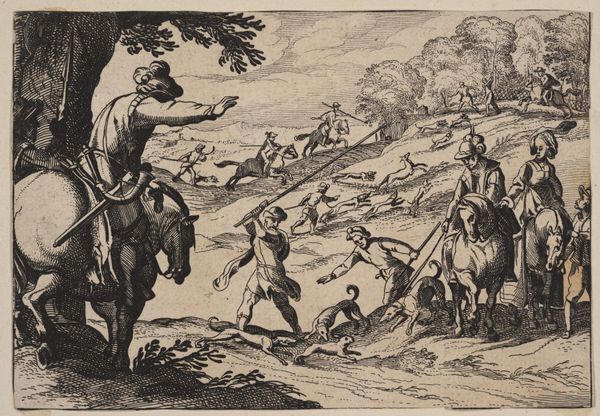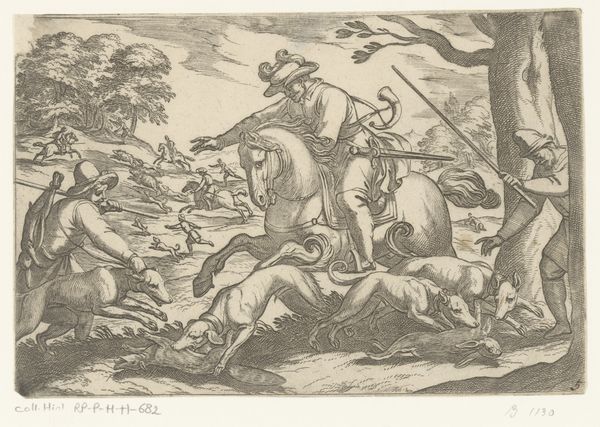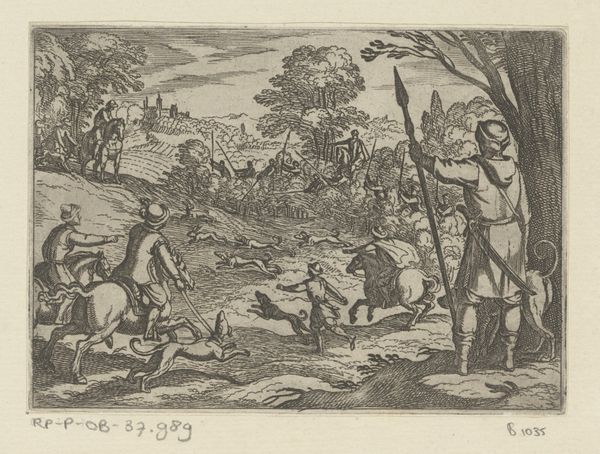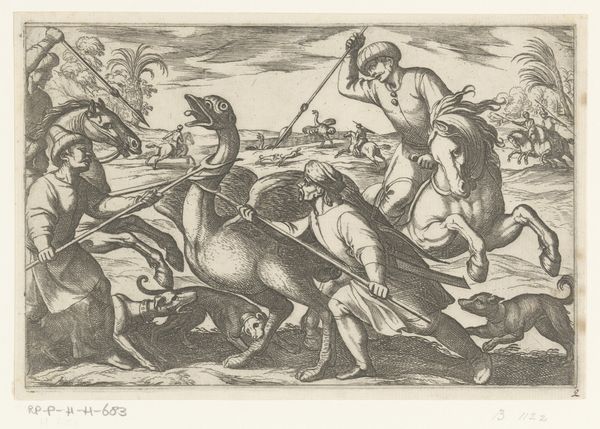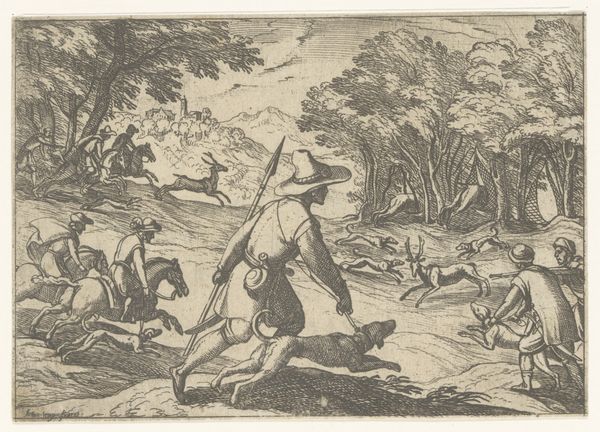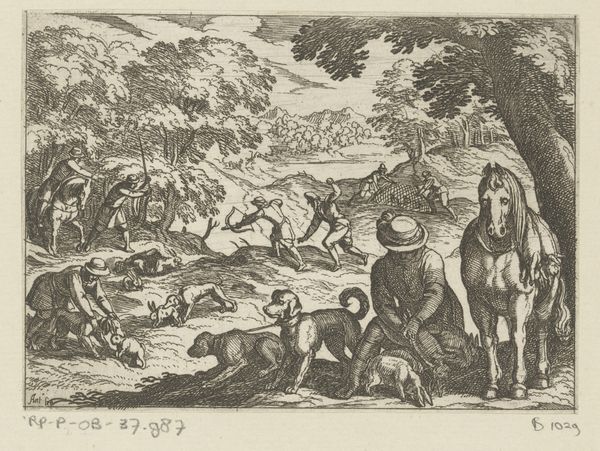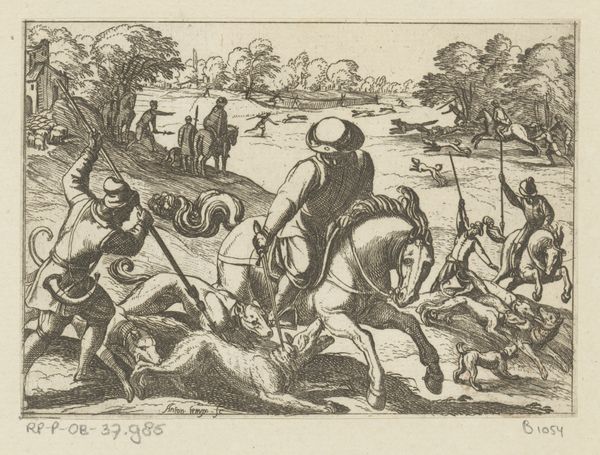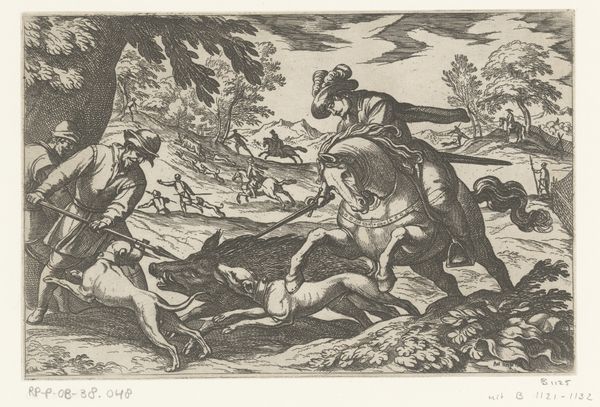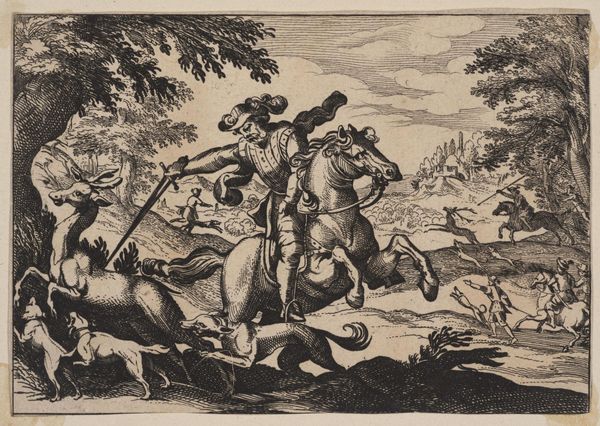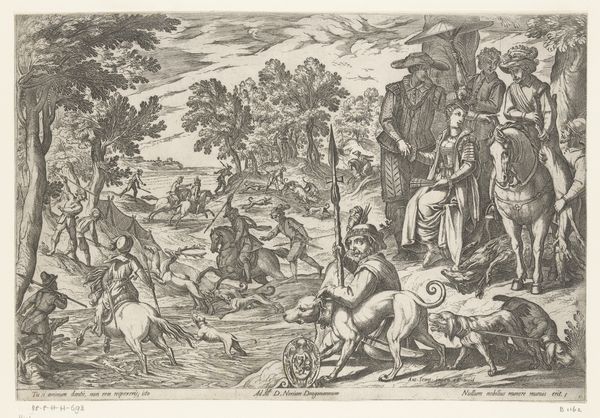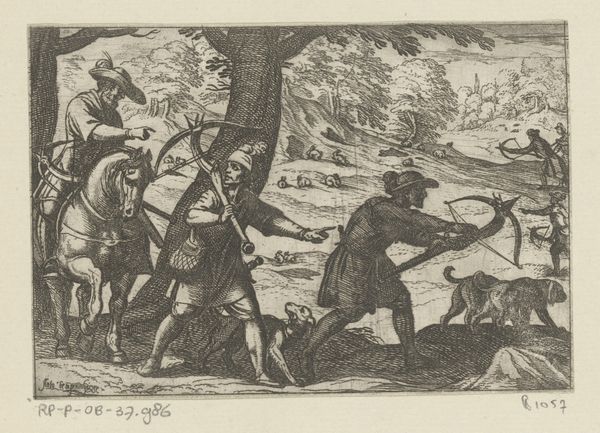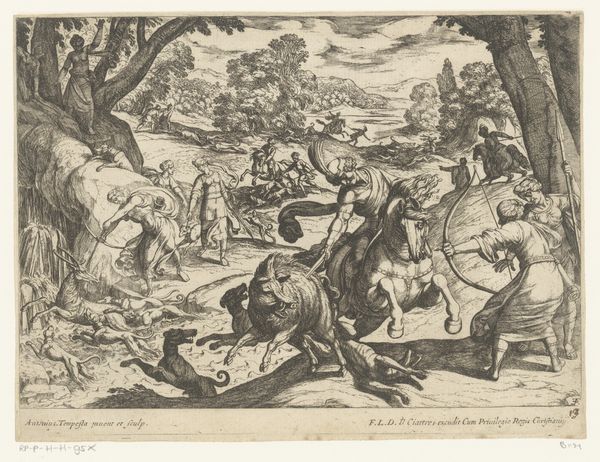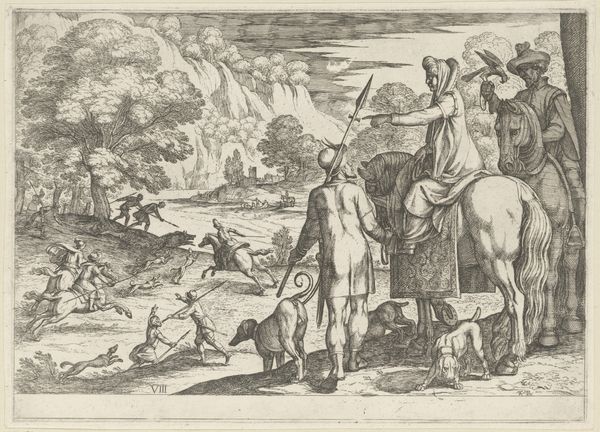
drawing, print, etching, ink, engraving
#
drawing
#
pen drawing
# print
#
pen illustration
#
etching
#
landscape
#
mannerism
#
ink
#
pen-ink sketch
#
pen work
#
genre-painting
#
engraving
Dimensions: height 133 mm, width 200 mm
Copyright: Rijks Museum: Open Domain
Curator: This is "Jacht op herten," or "Deer Hunting," a print created around 1595 by Antonio Tempesta. The scene, rendered in meticulous detail through etching and engraving, is brimming with activity. What’s your first take on it? Editor: Overwhelming, yet captivating. All these frantic figures in a landscape, each dot and dash like a tiny brushstroke. The scale seems off, though, doesn’t it? Like a stage crammed with too many players. I want to grab my imaginary zoom lens to get lost in the detail. Curator: Indeed, the composition leans towards the Mannerist style with its density and slightly exaggerated proportions. Hunting scenes like these were fashionable at the time, offering insight into aristocratic pastimes and demonstrating power over the natural world. Tempesta also worked within a period marked by political and religious upheaval. Editor: Power...Yes, that is coming up very strongly for me now. All the poor deers, struggling for their lives in that water. I'm getting some pretty savage undertones of exploitation, not only the animals, but even the land, so uncritically laid bare and available... Do you see that the hunt, traditionally a privilege of the elite, now seems a statement, a conquest, perhaps? Curator: Precisely. The visual emphasis on control reflects social hierarchies, reinforcing divisions within society. Looking at this through a lens that incorporates feminist and postcolonial perspectives makes this exploitation even more jarring. These violent spectacles normalise the subjugation of those deemed weaker, less powerful, in both human and non-human realms. Editor: This is making me reflect on how representations like these ingrain cultural acceptance, even celebration, of dominance. That initial "captivating" feeling shifts towards a sense of unease. Curator: These representations often reflect deeper structural imbalances of the early modern period. Even if hunting may seem like innocent pastime, its cultural placement makes it possible for the normalisation of all that dominance in a very visual way. Editor: Well, now I'm seeing all kinds of little brutalities lurking in those finely etched lines. It certainly made me rethink my first impression. I now wonder if Tempesta intended it as commentary or mere reporting? We'll probably never know for sure. Curator: The ambiguity might actually be one of its enduring strengths; making people stop to reflect. It provides material for both sides. It’s fascinating how art from centuries ago can still spark intense debates on topics of power and justice. Editor: Absolutely! And it just proves that art is never really just about what’s on the surface; there are always hidden depths, waiting to be stirred up.
Comments
No comments
Be the first to comment and join the conversation on the ultimate creative platform.

